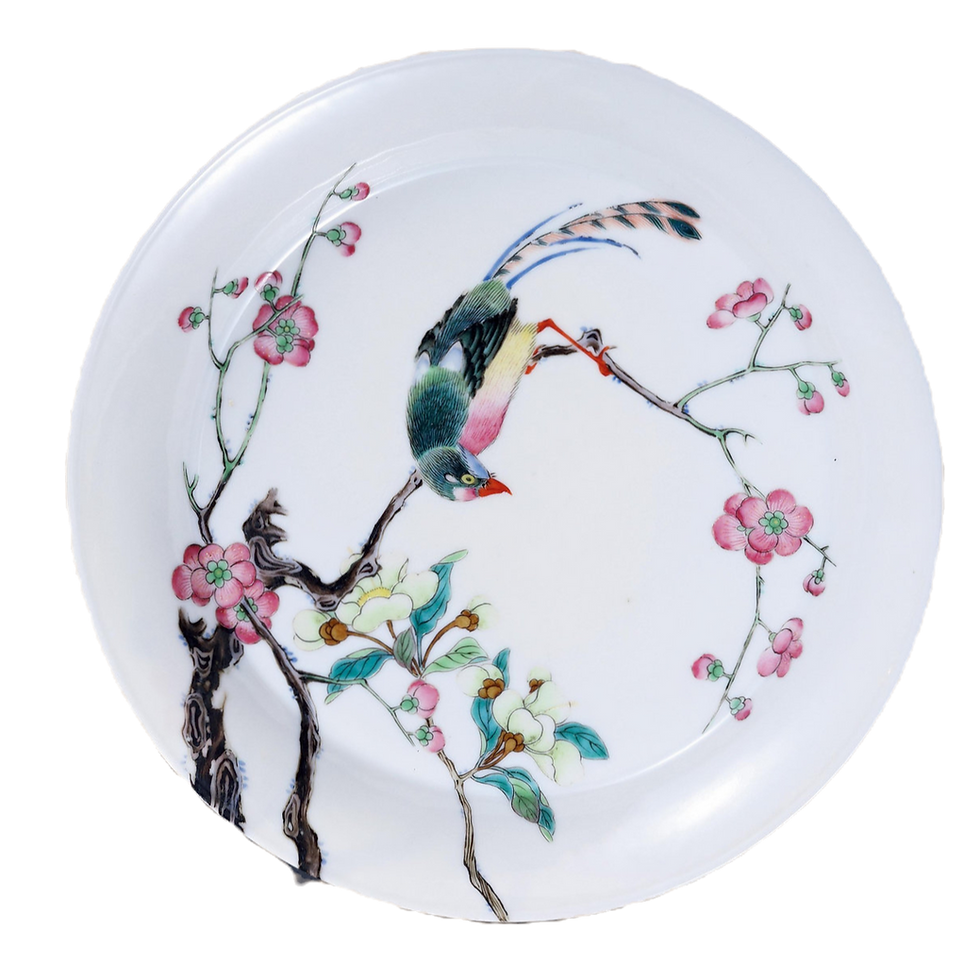A Passion Rekindled: How a Family’s Ukiyo-e Collection Bridged Generations
- Philippe Smolarski
- Jan 24
- 4 min read
Last Thursday morning, I received a phone call from a gentleman in Lyon. A man working in IT, he explained that he had inherited a collection of Japanese items from his great-grandfather and was seeking an expert appraisal. Without hesitation, I agreed, outlining our pricing structure and requesting that he upload photographs of the collection for review.
Twenty minutes later, the images arrived—thirty items in total. The first picture revealed a dinner set of porcelain, a typical Kutani export piece from the Meiji period. While charming, it was nothing extraordinary, the kind of set one might stumble upon on eBay, Etsy, or Le Bon Coin for less than €100. However, as I scrolled through the subsequent images, my curiosity was piqued. The collection included a series of woodblock prints, meticulously preserved in an old late 19th-century "farde" (portfolio) made of cardboard.
Intrigued, I immediately called the gentleman back, requesting additional photographs—close-ups of the prints, images of their backs, and any other details that might reveal their authenticity. The next day, before finalizing my formal written assessment, I reached out to him once more.
What I discovered was extraordinary. It is rare to encounter ukiyo-e prints that are not reprints, let alone ones in such fresh, near-mint condition, with generous margins intact. Each piece exuded the hallmarks of authenticity: the fibrous texture of the handmade *washi* paper, the layered application of colors, the subtle imperfections known as *bokashi*, the slightly raised texture of the ink, and the presence of artist signatures and publisher seals. Every detail confirmed their genuineness and exceptional quality.
Accompanying the prints were issues of "Le Japon Artistique", a monthly magazine published between 1888 and 1891 in French, English, and German. This publication was one of the first comprehensive introductions to Japanese art in Europe, a testament to the growing fascination with Japonisme during that era. Even more remarkable was the inclusion of two auction catalogues: one from the "Collection Philippe Burty", featuring Japanese and Chinese art objects sold at Galerie Durand-Ruel in March 1891, and another from the famous S. Bing sale held in May 1906. These catalogues, annotated with handwritten notes and prices, added a layer of prestigious provenance to the collection.
Among the ukiyo-e prints, there was no "Great Wave off Kanagawa"by Hokusai—a piece that, in pristine condition, can fetch millions of euros—nor any works by Sharaku. However, the collection did include Hiroshige’s "Kanbara (Station 15)" from "The Fifty-Three Stations of the Tōkaidō", a stunning depiction of "Evening Snow at Kanbara" in excellent condition. I estimated its value to be between €30,000 and €50,000, a figure that could rise further given its pristine state and documented provenance. Other treasures included works by Keisai Eisen from "The Sixty-Nine Stations of the Kisokaidō" and Utagawa Kuniyoshi’s "Heroic Warriors and Mythological Creatures", among others.
When I shared my findings with the client, he was visibly surprised. He had assumed the prints were worth no more than €100 to €200 each. After a moment of reflection, he revealed that he intended to keep the collection within the family. His IT business is thriving, and these prints, passed down from his great-grandfather—a textile merchant and fervent admirer of Japanese art—would remain a cherished legacy.
Two days later, he called to thank me once more and share exciting news: he planned to travel to Japan, a country he had never visited. Perhaps, he mused, he would continue his ancestor’s passion for collecting.
I was deeply gratified to have played a role in this rediscovery, connecting a modern-day enthusiast with the artistic legacy of his forebears. It was a poignant reminder of how art transcends time, bridging generations and cultures.
In Closing: A Touch of Japanese Wisdom
The rediscovery of this remarkable collection—anchored by Hiroshige’s "Kanbara (Station 15)"—reminds us of the timeless beauty and emotional depth of ukiyo-e. These prints, born in the bustling streets of Edo, have traveled through centuries to find new life in the hands of a modern-day enthusiast. The gentleman from Lyon, now inspired to explore Japan, carries forward the legacy of his great-grandfather, a passionate admirer of Japanese art.
As I reflect on the serene beauty of "Kanbara", I am reminded of a haiku that captures its essence:
雪の夜や
足音もなく
村眠る
Yuki no yo ya
Ashioto mo naku
Mura nemuru
Snowfall at night
No sound of footsteps,
The village sleeps.
This haiku mirrors the stillness of Hiroshige’s winter scene, where the world is hushed under a blanket of snow, and time seems to stand still. It is a moment of quiet beauty, fleeting yet eternal.
In the spirit of "一期一会 (Ichi-go ichi-e)"—"one time, one meeting"—this encounter with the collection is a unique and irreplaceable moment. It is a reminder to cherish every experience, every connection, and every piece of art that crosses our path. Just as the snow-covered village in Hiroshige’s print feels both timeless and ephemeral, so too are the moments we share with art and history.
May this collection continue to tell its story, and may the gentleman’s journey to Japan be filled with discovery, wonder, and a deeper appreciation for the art that has touched his family for generations.
*Arigatou gozaimasu.* Thank you for allowing me to share this story.




Comments